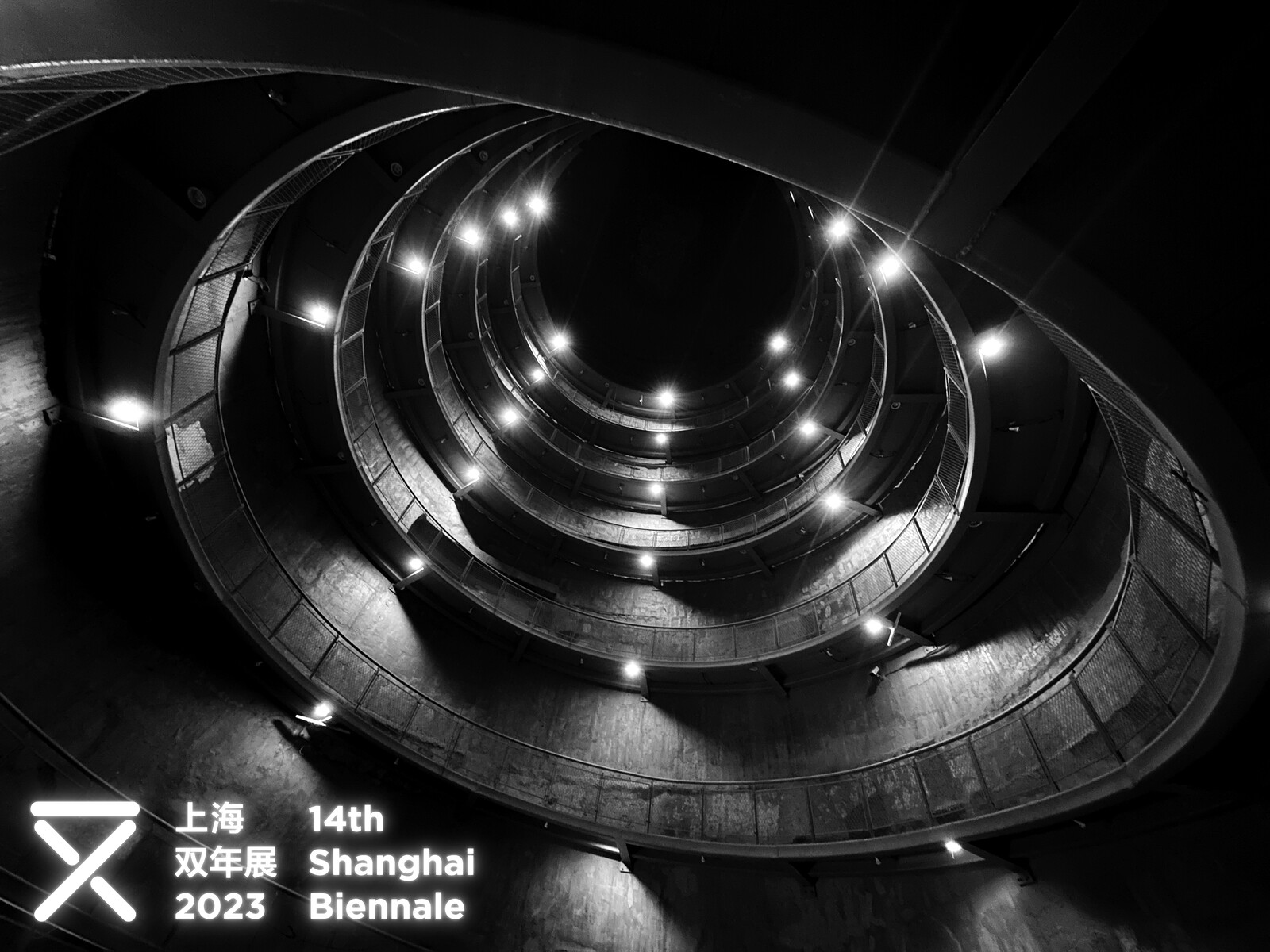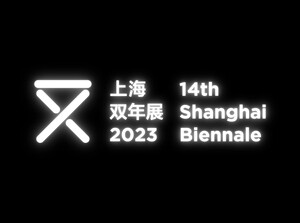678 Miaojiang Road
200011 Shanghai
China
Cosmos Cinema: The 14th Shanghai Biennale
Chief Curator: Anton Vidokle
Curators: Zairong Xiang, Hallie Ayres, Lukas Brasiskis
Publications editor: Ben Eastham
Exhibition architects: COLLECTIVE
Art direction: Mengyi Qian & NONPLACE Studio
The Organizing Committee of the Shanghai Biennale is pleased to announce further details of its forthcoming 14th edition and the artistic team working to realize it.
We have always looked to the night sky to make sense of ourselves, as we might look to a screen onto which the past and the future is projected. Titled Cosmos Cinema, the 14th Shanghai Biennale will offer visitors a spacetime in which to reflect on the operations of the universe and our place within it. The Greek word from which “cosmos” derives connotes not only the universe but also beauty and harmony; the Chinese term yuzhou connotes infinite time and space, resonating strongly with the cinematic.
The cosmos shapes every aspect of our lives, whether wittingly—the interpretation of stars and planets, after all, gave rise to our origin stories, religions, systems of time, economies, means of navigation, agricultures, sciences, and social orders—or unwittingly, in the movement of the tides or the effects of solar flares. Cosmos Cinema considers how the terms of our relationship with the cosmos condition all life on earth. The principles on which cinema is built—light, shadow, and encounters with images over time—are inherent to the human experience of the cosmos. Indeed, Alexander Kluge suggests that the universe is the original cinema, in which all past events are stored as visible “tracks of light.” André Bazin states that cinema “has not yet been invented,” and so contains boundless potential. Combining these two perspectives—one looking to the past, the other to the future—Cosmos Cinema posits that cinema is not only a medium for storytelling but a cosmic phenomenon, with the potential to change our understanding of the universe and our place within it.
The works included in the exhibition are as various in their forms and approaches as are readings of the constellations. They reflect on diverse cosmologies and microcosmic realities, indicating the different ways in which humanity interacts with and understands the universe. But they might all be said to begin from a point of wonder: how do we fit into the systems that govern time and space? Do the same principles operate at every scale, and how might our understanding of the cosmos change our terrestrial behavior? How do we live together, as a species and with nonhuman others, on earth and beyond?
Cosmos Cinema proposes that contemplations of the cosmos—ancient and modern—might work against the alienation that is endemic to our historical moment: alienation from each other, from nature, and even from time itself. As no part of our world can be separated from the effects of the sun, the moon, and the heavenly bodies, the 14th Shanghai Biennale will suggest that seeking to understand the cosmos might encourage more complex ways of thinking about the ever-more entangled challenges that face the world today.
That we are all equal under the stars and in front of the screen does not mean that we are all the same, as the diversity of work included in this exhibition will attest. Every culture interprets the universe differently and builds from those interpretations their identifying philosophies. If it is a marker of human similitude that we all look to the skies in awe, then it is a marker of our difference that we each discover different affiliations in them. Cosmos Cinema will present a wide spectrum of propositions and responses, from the urge to explore outer space to reflections on the origins of consciousness, realized as sculptures, films, installations, performances, and paintings.
A constellation of artists from China and around the world will explore these histories, reflecting Shanghai’s position as a cosmopolitan city and heartland of cinema, in a country with a long philosophical and artistic engagement with the cosmos. Cosmos Cinema aspires to contribute to that tradition.
The curatorial team
The chief curator of the biennial, Anton Vidokle, has assembled an extraordinary artistic team to work on the realisation of this exhibition. The list of artists will be announced soon.
Curators
Zairong Xiang’s research, teaching, and curatorial practices engage with cosmology and cosmopolitanism in their culturally diverse, historically specific, and conceptually promiscuous manifestations in English, Spanish, French, Chinese, and Nahuatl. He teaches literature and art at Duke Kunshan University, and was co-curator of the 2021 Guangzhou Image Triennial and Ceremony (Burial of an Undead World) at Haus der Kulturen der Welt, Berlin, among many other projects. He is the author of Queer Ancient Ways: A Decolonial Exploration (punctum books) and is currently completing his second book, Transdualism.
Hallie Ayres is a researcher and art historian living in New York. Her writing has been published in e-flux Criticism and e-flux Journal, and she has lectured at the Academy of Fine Arts, Prague. She is a research fellow at the Institute of the Cosmos, where she edited Cosmic Bulletin 2021. Hallie has coordinated many exhibitions and projects around the globe and has produced a number of experimental films, including in New York and Turkey. She works as Associate Director at e-flux.
Lukas Brasiskis is a Curator of Film and Video at e-flux, where he seeks to bridge the gaps between the scholarly appreciation, curation, and study of film through regular screenings, associated events, and an online program. He received his PhD degree from New York University in 2022, and lectures at NYU and Brooklyn College. His writings on moving image are widely published, and he is the co-editor of Cinema and the Environment in Eastern Europe (Berghahn Press) and Jonas Mekas: The Camera Was Always Running (Yale University Press).
Publications editor
Ben Eastham is a writer and editor based in Athens and London. He is co-founder of the London-based literary magazine The White Review and the editor of books on artists and poets including Stephen Spender, Fabio Mauri, and Luis Camnitzer. His writing on art and literature is widely published, and he was previously an editor at ArtReview and an associate editor at Documenta 14. His second book, The Imaginary Museum, a speculative fiction about art and memory, was published by Harper Collins in 2020. He is Editor-in-Chief of e-flux Criticism.
Exhibition architects
COLLECTIVE is a globally oriented architecture studio—practising architecture, interiors, and exhibition design—headquartered in Hong Kong with a studio in Madrid. Bringing together different expertise and wide international project experience, the studio challenges the status quo of the “named” architecture office. COLLECTIVE is currently steered by Betty Ng, Chi Yan Chan, Juan Minguez, and Katja Lam, working with a diverse team from an international background.
Art direction
Mengyi Qian & NONPLACE Studio
Mengyi Qian is Art Director of e-flux. In 2022, she moved to Shanghai and founded NONPLACE studio with Xi Chen and Churong Mao. Together they explore expressions through different languages, including but not limited to installations, moving images, virtual experiences, and visual design. Stepping into different fields, NONPLACE promotes interdisciplinary cooperation. It is committed to experimental visuals as a means of creating new experiences among people, mediums, and spaces.
For press enquiries, please contact: Zhang Xiaojing and Liu Yijia at Shanghai Biennale: media [at] powerstationofart.com, zhangxiaojing [at] powerstationofart.com, liuyijia [at] powerstationofart.com

